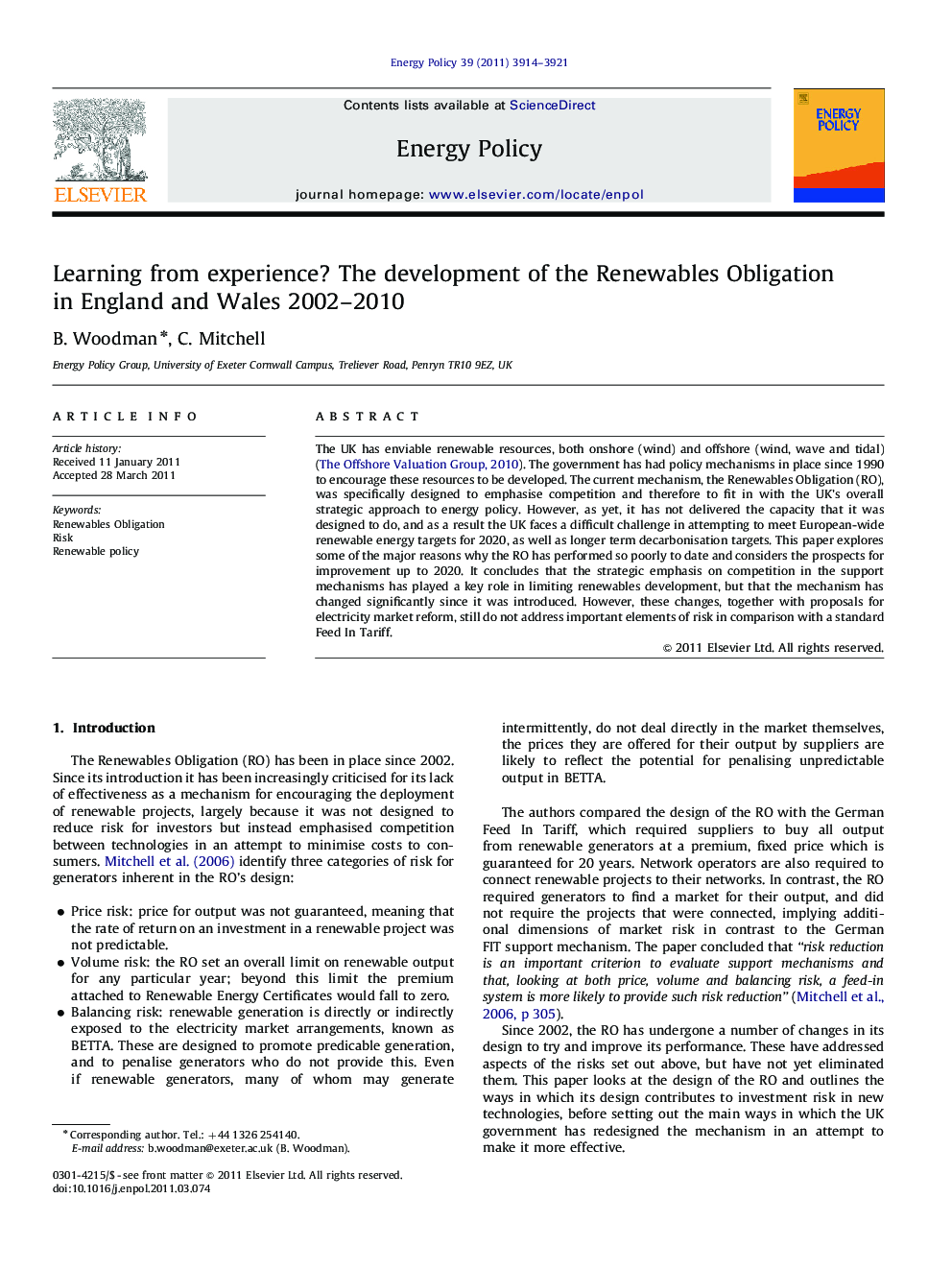| Article ID | Journal | Published Year | Pages | File Type |
|---|---|---|---|---|
| 993476 | Energy Policy | 2011 | 8 Pages |
The UK has enviable renewable resources, both onshore (wind) and offshore (wind, wave and tidal) (The Offshore Valuation Group, 2010). The government has had policy mechanisms in place since 1990 to encourage these resources to be developed. The current mechanism, the Renewables Obligation (RO), was specifically designed to emphasise competition and therefore to fit in with the UK’s overall strategic approach to energy policy. However, as yet, it has not delivered the capacity that it was designed to do, and as a result the UK faces a difficult challenge in attempting to meet European-wide renewable energy targets for 2020, as well as longer term decarbonisation targets. This paper explores some of the major reasons why the RO has performed so poorly to date and considers the prospects for improvement up to 2020. It concludes that the strategic emphasis on competition in the support mechanisms has played a key role in limiting renewables development, but that the mechanism has changed significantly since it was introduced. However, these changes, together with proposals for electricity market reform, still do not address important elements of risk in comparison with a standard Feed In Tariff.
► We outline the design of the Renewables Obligation and some shortcomings. ► The mechanism has performed poorly because of the risks it entails for investors. ► It has been subject to several changes which increasingly challenge the original design of the RO. ► Future developments may introduce even more fundamental change for supporting renewable. ► Over time risks have been reduced but not yet eliminated.
